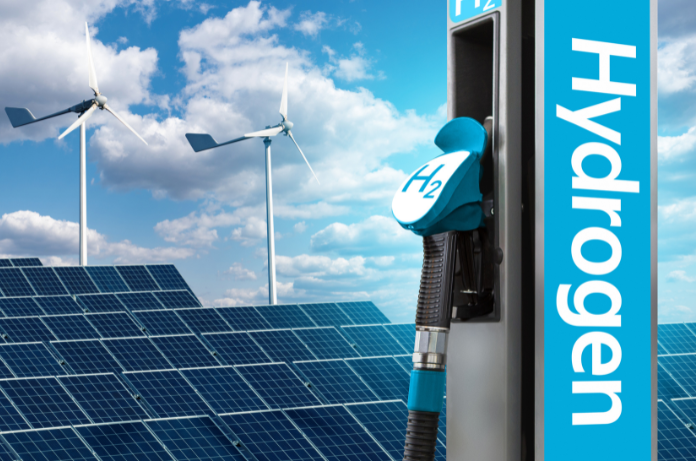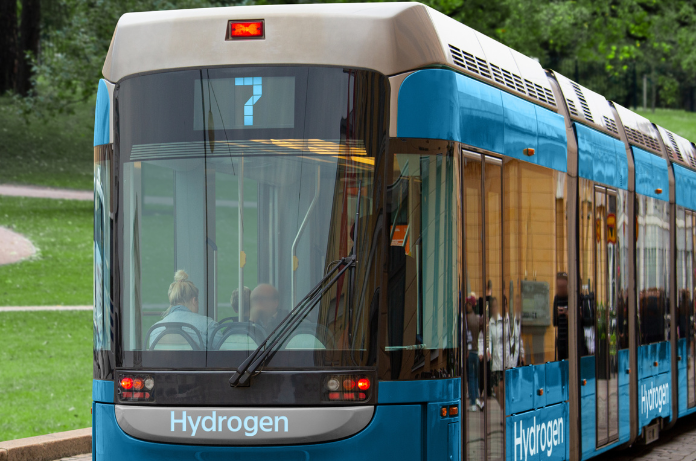Exciting news about India’s railway system is on the horizon! As per the reports year 2024, marks a significant milestone as India gears up for the trial run of its first hydrogen-powered train from the Hydrogen Trains initiative. This innovative move not only highlights the country’s commitment to green technology but also signals a promising future for sustainable transportation.
What’s the “Big Deal” about Hydrogen trains?
Hydrogen trains are a fantastic leap toward reducing carbon emissions in the transportation sector. Unlike traditional diesel trains, hydrogen trains are powered by fuel cells that convert hydrogen into electricity, with water vapor as the only byproduct. This means they are cleaner, quieter, and much more environmentally friendly. With the world increasingly focusing on climate change and pollution, the introduction of hydrogen trains could be a game changer for India.
The initiative to launch a hydrogen train in India is part of the broader goal of achieving net-zero emissions by 2070. It aligns perfectly with the government’s push toward sustainable energy and eco-friendly solutions. By adopting this technology, India can significantly cut down on its reliance on fossil fuels, especially in sectors that have been hard to decarbonize, like transportation.
The trial run: What to expect
Set to begin in December 2024, the trial runs will primarily take place in regions where traditional electric infrastructure is lacking. The first prototype will be tested on the 89 km Jind-Sonipat route in Haryana. Imagine traveling through picturesque landscapes powered by clean energy! The first train will operate on select routes, providing valuable data on performance, efficiency, and passenger comfort.
Railway officials are optimistic about the train’s performance. After all, several countries, including Germany and the UK, have already successfully integrated hydrogen trains into their rail networks. Learning from their experiences, India aims to customize this technology to suit local conditions and requirements.
Why Hydrogen trains?
You might be wondering: why hydrogen? It’s a versatile fuel that can be produced from various sources, including water and biomass. Plus, with India’s vast renewable energy potential, think solar and wind-producing green hydrogen is becoming more feasible. The government is investing in infrastructure to facilitate hydrogen production, ensuring that train operations can run sustainably.

Moreover, hydrogen trains are quieter compared to their diesel counterparts, which is a boon for communities living near railway lines. This aspect alone could enhance the quality of life for many people, making rail travel a more attractive option.
Potential Challenges
While the prospects are exciting, it’s essential to address potential challenges. The infrastructure for hydrogen production and distribution needs to be developed comprehensively. It’s not just about having the trains; there must be adequate refueling stations along the routes. Additionally, the cost of hydrogen production can be higher than traditional fuels, although ongoing advancements in technology are likely to bring these costs down over time.
The introduction of hydrogen trains in India is more than just about transportation, it’s part of a larger narrative surrounding green technology and sustainable development. This project can inspire further innovations in public transport, creating a ripple effect that could lead to more eco-friendly options across various modes of travel.
As India embarks on this exciting journey with its first hydrogen train, it also sends a message to the world: sustainable transport is not just a dream; it’s a reality that can be achieved with dedication and innovation. The year 2024 could very well mark the beginning of a new chapter in Indian rail history, one where clean and green travel becomes the norm rather than the exception.
So, keep an eye out for those trial runs! Who knows, the next time you hop on a train, it might just be powered by hydrogen, making your journey a part of the solution to a cleaner, greener planet. Here’s to a sustainable future on the tracks!

